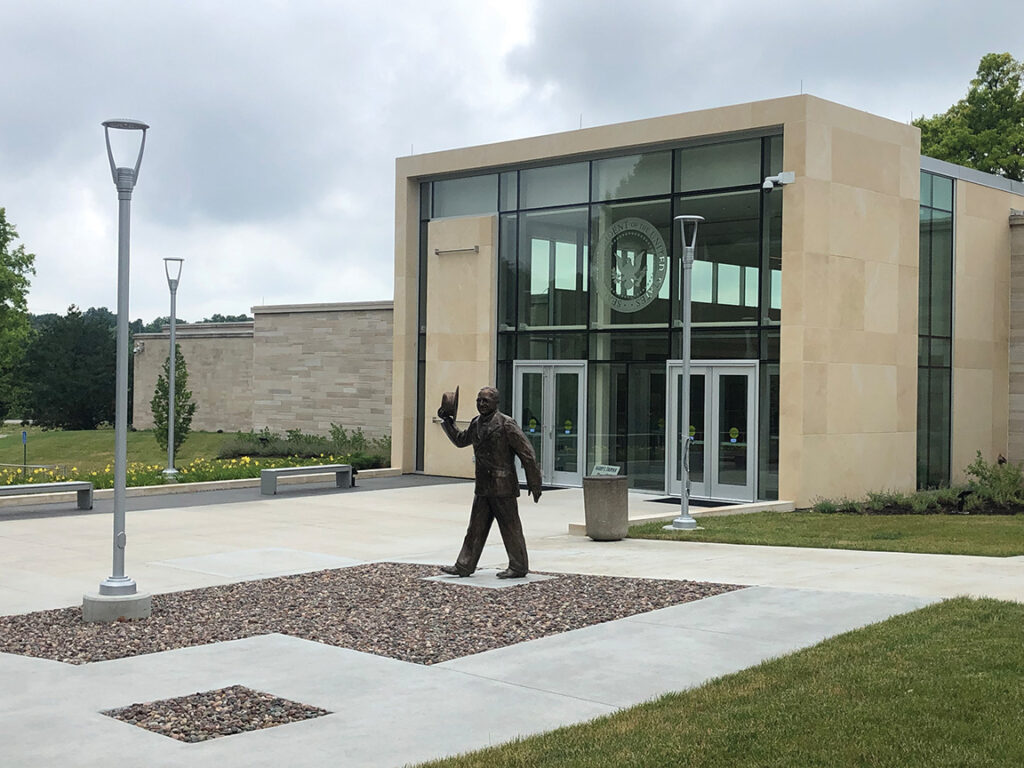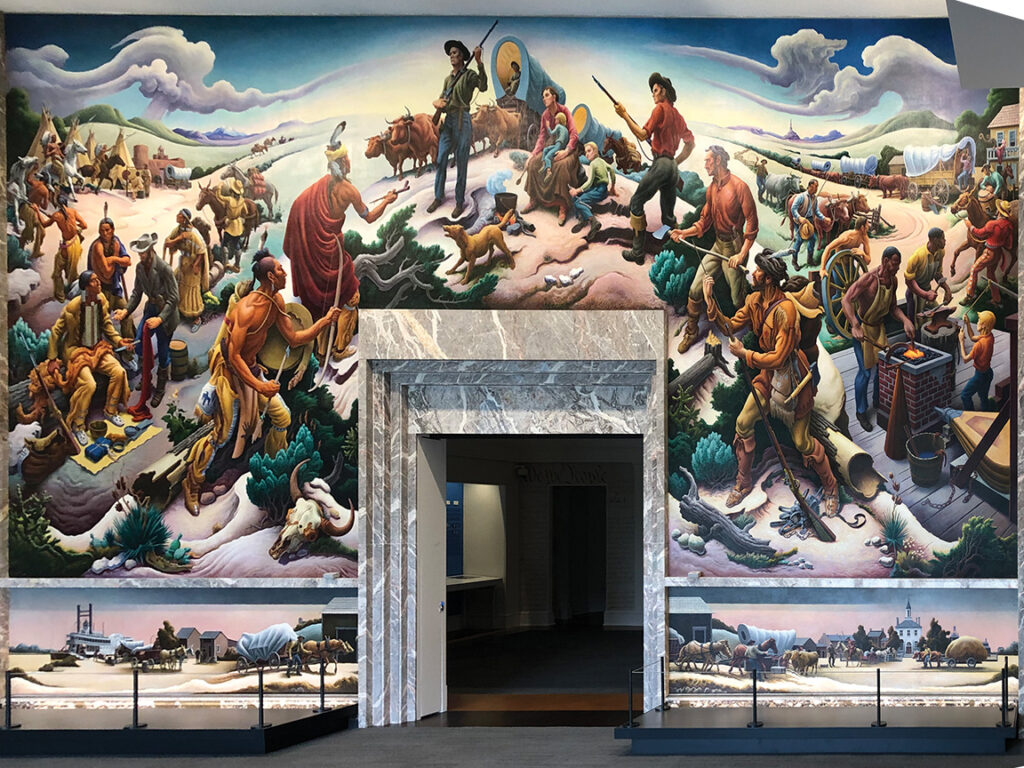
Corbin Smith
Editorial Assistant
It has been two years since the Harry S. Truman Presidential Library and Museum has been open to the public. During that hiatus, museum staff and construction personnel worked tirelessly on remodeling exhibits to best represent the 33rd president’s life.
The $29 million renovation, the first for the library since 2001, changed the building entirely. The funds were donated from more than 29,000 donors including federal funds, state funds and many local foundations. Truman Library Institute Executive Director Alex Burden said the updates were long overdue.
“We knew that the old exhibit was an old exhibit, and that it needed to be refreshed,” Burden said. “The museum was [last] designed in 1997 and ’98, and it was installed in 1999. So when we started this project, that’s 18 or 19 years. In the museum world, about 10 years is the normal life of an exhibit before it’s time to switch it out, so we were about seven or eight years beyond that.”
The library underwent drastic changes in order to make exhibits more aesthetically appealing and educate guests better. Before, the museum was separated by different parts of Truman’s life situated on different floors, which caused visitors to learn non-chronologically.
Now, each stop through important points in Truman’s life gives visitors the option to watch a video explaining the former president’s involvement in history. The first video any visitor will see is a compilation of letters and quotes detailing Truman’s ascent to presidency. In the adjacent room, visitors will find artifacts and stories from his early life in Independence, Mo., as well as every letter he wrote to his wife Bess.
Museum Education Director Mark Adams said having a collection of personal experiences adds a vital part to the Truman story.
“Rarely does any other presidential library have a collection of letters like that to his wife,” Adams said. “There’s things like these letters from Bess, some of these letters that he wrote during World War I. We reproduced these books so they’re a little easier to read than just putting them all on the wall, and some of these are very revealing.”
Along with letters, there are various other artifacts that were significant in Truman’s life. The piano he played growing up, his World War I uniform and guns are some of his personal trinkets on display. According to Adams, the Truman family liked to keep every little memento gathered over their lifetimes, which worked out well for the presidential library.
Adams also said that one of the most important exhibits is the one that details his life from his first day in office on April 13, 1945. From a short video about the day Franklin Delano Roosevelt died, visitors walk down a hallway with sections titled May through August for the few months following World War II.
At the end of this historical tunnel, a chamber with a single miniature origami crane sits in front of many larger cranes. This is an exhibit for a child who died after developing leukemia from the radiation of the atomic bomb dropped on Nagasaki. The idea of this exhibit is to show that not all impacts of Truman’s presidency were positive.
One of the more eye-catching exhibits sits around the corner from the origami crane. The interactive and largely visual piece has potential to be the most memorable sight in the museum.
“There’s a 14-foot-high globe, which is the centerpiece of the exhibit that’s very eye-catching,” Adams said. “It tells the story that once World War II was over, all of the problems were going on all around the world, all at the same time. And it’s kind of overwhelming that Truman had to face all of these issues. He couldn’t solve all of them, but he made his attempts to try and solve some of them.”
The room in which the globe sits is allocated for the peacetime era after the second World War, or lack thereof. Inside the globe, visitors are able to click different prompts to learn about how each part of the world was affected by the war and how its effects reverberated.
“The fractured globe experience is really, I think, maybe the most sophisticated and expensive of our interactives,” Burden said. “On the outside, we project the problems that are taking place in 23 different spots around the world. Inside, there’s more of a family personal view of the problems taking place around the world.”
The rest of the museum follows Truman’s years as a president dealing with civil rights in America, the Israeli nation and the Red Scare. Each exhibit has videos and interactive media to reel in visitors that struggle with reading an overwhelming amount of information.
At the conclusion of the Red Scare exhibit, military nurse and soldier uniforms from the Korean War hang on display. Despite being the bigger items in the collection, attention is directed toward the Purple Heart medal in a separate glass display. This medal is attached to a letter from a soldier’s mother who blamed Truman for the death of her son in combat. This is placed separate from the other displayed items in order to add some shred of humanity to the former president, as he kept the medal and note locked in his desk in the Oval Office.

From the Korean War Exhibit, visitors are led to the former entrance to the museum and the “Independence and the Opening of the West” mural painted by artist Thomas Hart Benton. Other artifacts from Truman’s time in the White House are displayed in a pathway leading past Truman’s final resting place and the entrance of the museum.
Burden and Adams both confirmed that there are more than 3,000 artifacts that aren’t on display, but in storage, waiting to make their rotations in front of the public.
After two long years, Harry S. Truman Presidential Museum and Library is ready to once again host inquiring minds.
“We’re really thrilled with the final product,” Adams said. “We’re just really excited to show it off to the Kansas City public so they can come out and spread the word as well.”
Admission tickets went on sale June 28 and the doors will officially open to the public July 2. Tickets will only be sold online at trumanlibrary.gov and for specific time slots in order to lower the risk of COVID-19 transmission.

















